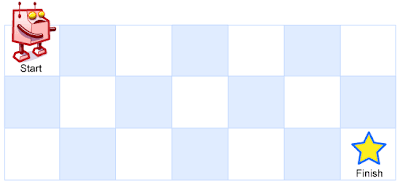Question
link
Find the contiguous subarray within an array (containing at least one number) which has the largest sum.
For example, given the array [−2,1,−3,4,−1,2,1,−5,4],
the contiguous subarray [4,−1,2,1] has the largest sum = 6.
More practice:
If you have figured out the O(n) solution, try coding another solution using the divide and conquer approach, which is more subtle.
Stats
| Frequency |
3 |
| Difficulty |
3 |
| Adjusted Difficulty |
4 |
| Time to use |
-------- |
Ratings/Color = 1(white) 2(lime) 3(yellow) 4/5(red)
Analysis
This problem can be solved using DP or Divide and Conquer.
DP solution is very easy. I will only post the code.
Divide and Conquer approach is difficult. Not only the idea of solution is hard to come up with, the coding part is even more challenging, especially when the input array contains all negative numbers!
Solution
First 2 code posted below are DP solutions.
2nd code is from this article (Algorithm 3). The idea is to divide the list by half, and find the max of this 3 values:
- max subarray to the left of mid-point (exclusive)
- max subarray to the right of mid-point (exclusive)
- max subarray from left of mid-point to the right of mid-point (inclusive)
For 1 and 2 are easy, for 3 is not. It needs to read left until the end, and right until the end (which means basically read n times). The total time complexity is O(nlgn).
3rd code is from this blog. It’s exactly same method, just coding a bit different.
Note there can be negative number! We can not initiate sum to 0. Instead I should do Integer.MIN_VALUE. Meanwhile, the sum should be initiated to 0, and cannot be Integer.MIN_VALUE.
My code
public class Solution {
public int maxSubArray(int[] A) {
if (A == null || A.length == 0) {
return 0;
}
int pre = 0;
int max = Integer.MIN_VALUE;
for (int i = 0; i < A.length; i++) {
max = Math.max(max, pre + A[i]);
pre = Math.max(0, pre + A[i]);
}
return max;
}
}
2nd code
public int maxSubArray(int[] A) {
return recmax(A, 0, A.length - 1);
}
private int recmax(int[] A, int l, int u) {
if (l > u) /* zero elements */
return 0;
if (l == u) /* one element */
return Math.max(Integer.MIN_VALUE, A[l]);
int m = (l + u) / 2;
/* find max crossing to left */
int lmax = Integer.MIN_VALUE;
int sum = 0;
for (int i = m; i >= l; i--) {
sum += A[i];
lmax = Math.max(lmax, sum);
}
int rmax = Integer.MIN_VALUE;
sum = 0;
/* find max crossing to right */
for (int i = m + 1; i <= u; i++) {
sum += A[i];
rmax = Math.max(rmax, sum);
}
return Math.max(Math.max(recmax(A, l, m), recmax(A, m + 1, u)), lmax
+ rmax);
}
3rd code
public int maxSubArray(int[] A) {
return maxArray(A, 0, A.length - 1, Integer.MIN_VALUE);
}
private int maxArray(int A[], int left, int right, int maxV) {
if (left > right) return Integer.MIN_VALUE;
int mid = (left + right) / 2;
int lmax = maxArray(A, left, mid - 1, maxV);
int rmax = maxArray(A, mid + 1, right, maxV);
maxV = Math.max(Math.max(maxV, lmax), rmax);
int sum = 0, mlmax = 0;
for (int i = mid - 1; i >= left; i--) {
sum += A[i];
if (sum > mlmax) mlmax = sum;
}
sum = 0;
int mrmax = 0;
for (int i = mid + 1; i <= right; i++) {
sum += A[i];
if (sum > mrmax) mrmax = sum;
}
maxV = Math.max(maxV, mlmax + mrmax + A[mid]);
return maxV;
}
